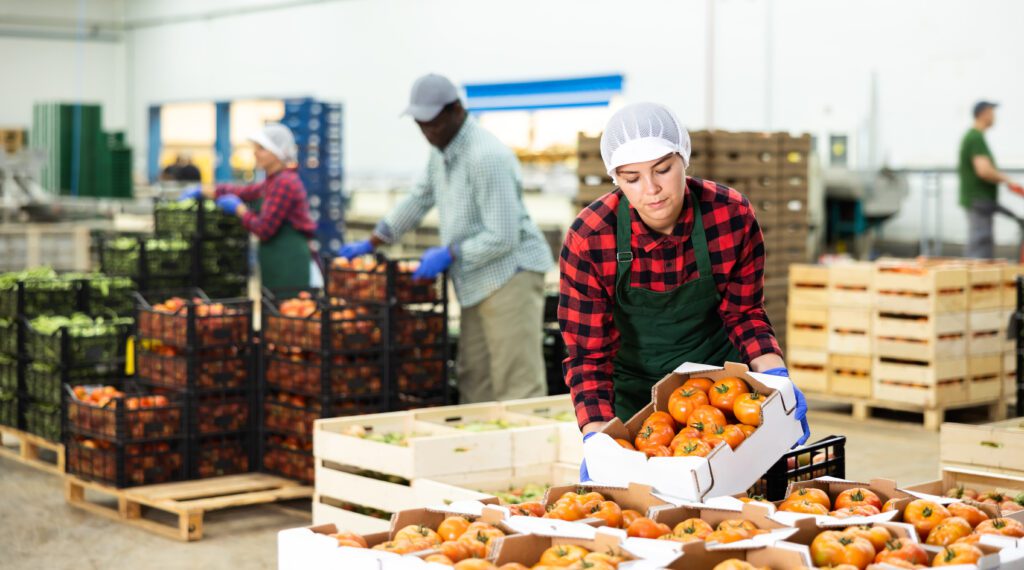Florida’s Farm to School Program Aims to Connect Local Farmers With the Classroom
by RYAN MILEJCZAK
You’ve likely heard of farm to table—but what about farm to school?
Florida’s Farm to School initiative aims to connect our schools with growers around the state, improving nutrition for our students and building their connection to agriculture.
“Florida’s Farm to School initiative enhances the connection that communities have with local growers,” explains Vianka Colin, director of the Division of Food, Nutrition and Wellness for the program.
“The initiative seeks to increase the amount of Florida products served in schools, offer healthier options for Florida’s children, and get students involved in nutrition and agriculture education through school garden activities.”
The initiative first came into place in 1997, and in the 2023-24 school year, it saw $45 million in Florida products to help nourish our students and support our agriculture industry. Currently, 36 of the state’s 67 schools are engaged with the program, such as those in Hillsborough County.
“We know and we believe it is important to bring local foods to our students and to bring fresh food to our students,” says Arianne Corbett, a registered dietician nutritionist with Hillsborough County Student Nutrition Services
“We know it is more nutritious, we know it’s great for the environment, and the best part is that we get to use our dollars to reinvest in our local economy, which helps our farmers, our local businesses and the families that make up Hillsborough County Public Schools,” she says.
The goals of the program are to:
- Enrich the connection communities have with fresh, healthy food and local food producers by changing food purchasing and education practices at schools;
- Provide students with access to healthy, local foods as well as education opportunities such as school gardens, cooking lessons and farm field trips;
- Empower children and their families to make informed food choices while strengthening the local economy and contributing to vibrant communities; and
- Inform and educate Florida producers about school market opportunities.
“Farm to School aligns with the Florida Department of Agriculture & Consumer Services’ goals to secure the future of Florida agriculture and prioritize Florida-grown food,” explains Colin. “It’s a win for our kids because it provides nutritious school meals and early agriculture and nutrition education opportunities; a win for Florida producers, providing them a huge market with over 2 million school meals served every weekday; and it’s a win for communities because it strengthens our food system and local economies.”
Products provided by Florida producers include produce, meat, and fish.
“Farms, ranches, and fisheries of all sizes can provide Florida commodities to meet schools’ nutritional needs. By working with schools, farmers and producers can plan what, when and how much to produce,” explains Colin.
The program is split into three pillars: Agricultural Education, School Gardens, and Local Commodity Procurement.
“Each of these pillars is important to support the overall mission of FDACS, including supporting Florida’s agricultural economy, ensuring children in the State of Florida have access to nutritious food to help reach their full potential, and increasing awareness and consumption of Florida agricultural commodities,” says Colin.
By providing Florida fresh products to our schools, the program helps provide tastier, healthier meals in our schools.
“Local food has more nutrients, and a shorter time between harvest and table. Food imported from far-away states and countries is often older, has traveled and sits in distribution centers before it is consumed, losing nutrients as it ages,” explains Colin.
Locally grown food, on the other hand, is full of flavor and tastes better, Colin says. “Local crops are picked at their peak of ripeness versus being harvested early to be shipped and distributed. Many times, local produce has been picked within 24 hours of purchase.”
Even better, students can learn about the food they’re eating and expand their palate in the process.
“Local growers can tell schools how the food was grown, and school nutrition directors can ask what practices were used to produce the commodities. When you know where your food comes from and who grew it, you know a lot more about that food,” says Colin. “Plus, promoting local foods also leads to children consuming more and a greater variety of fruits and vegetables through Farm to School meals and at home, and a decrease in preference for and consumption of less nutritious foods.”
Other aspects of the program include:
- The food recovery program, which helps schools reduce, recover, and recycle food waste.
- Field trips to farms to learn about how our food is grown.
- The Harvest of the Month, which provides free, ready-to-go lessons that feature a different Florida product each month, encouraging healthier eating and promoting agricultural education.

